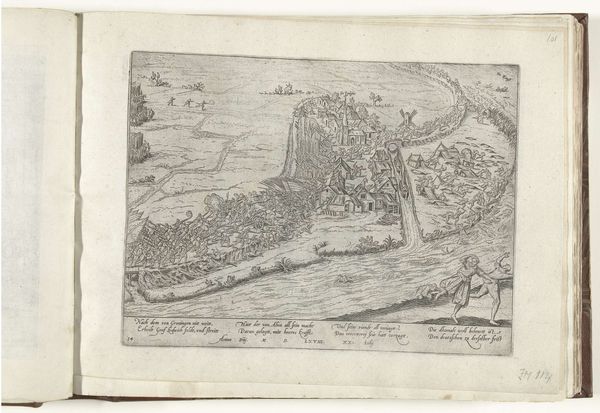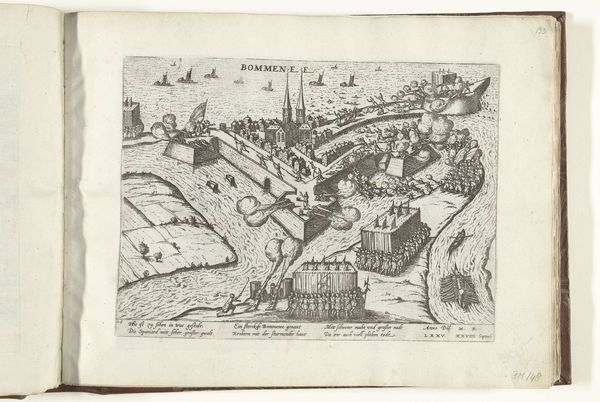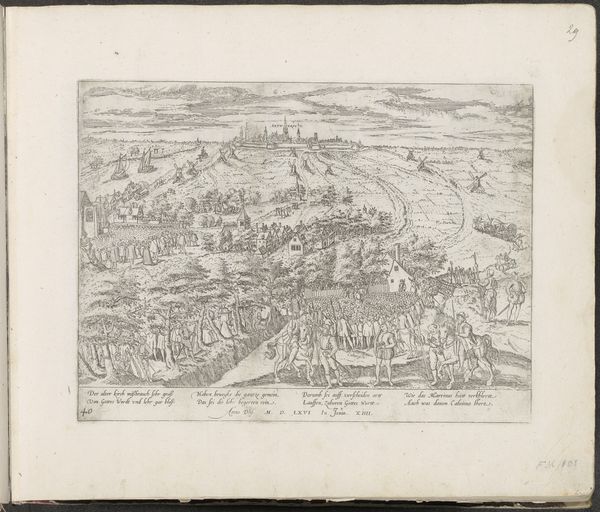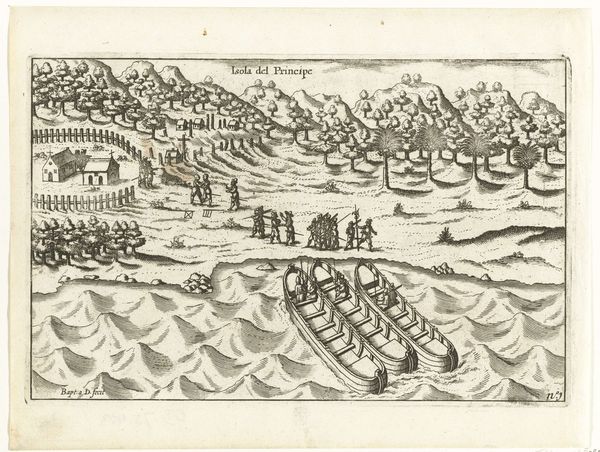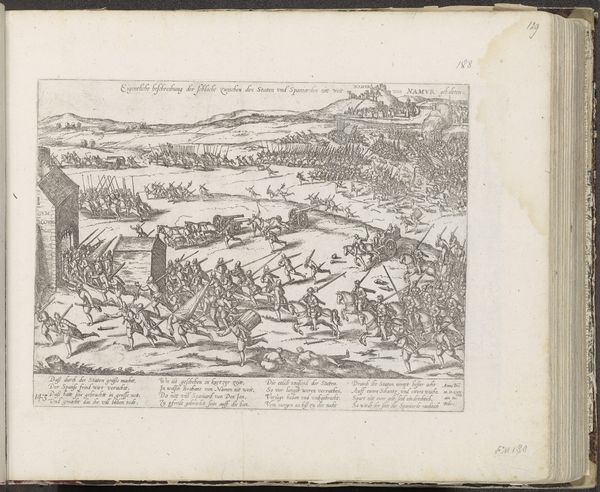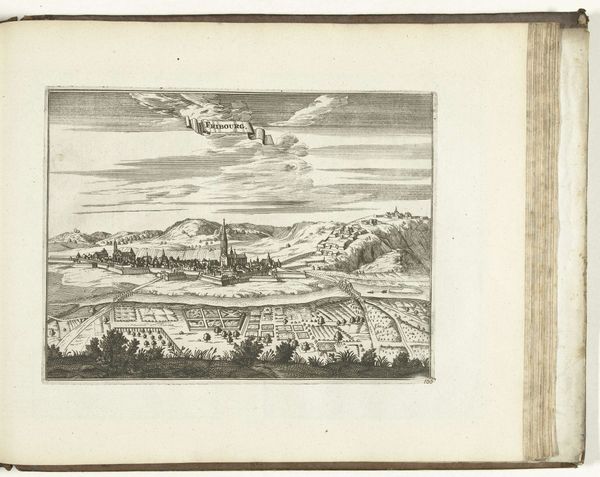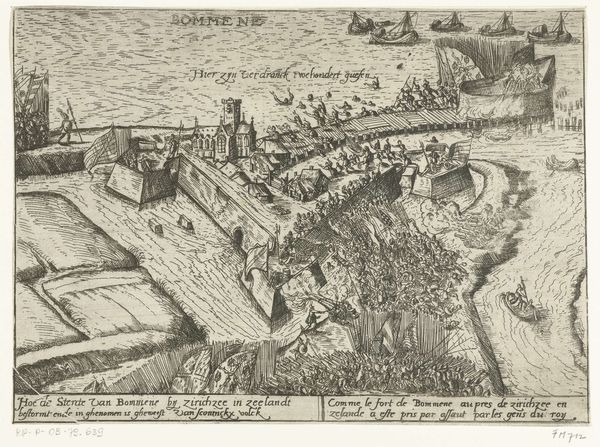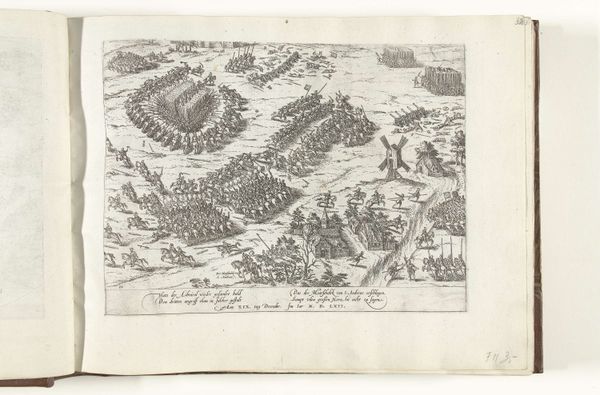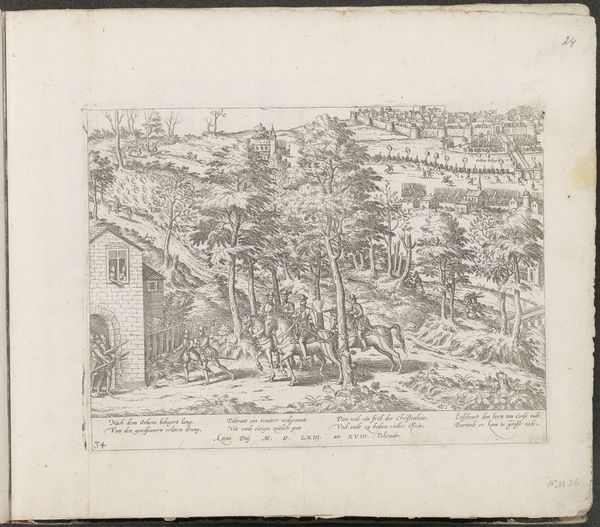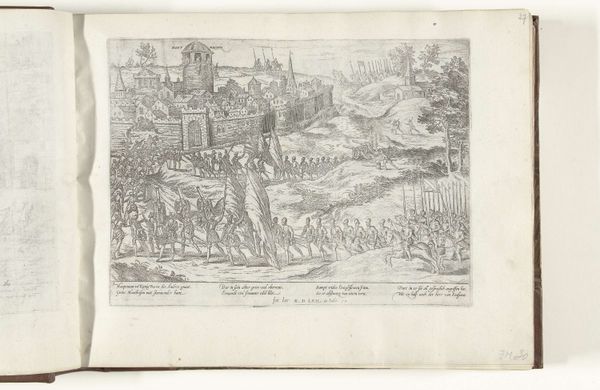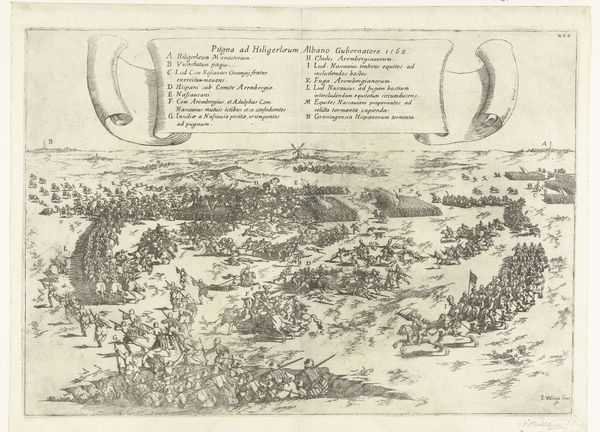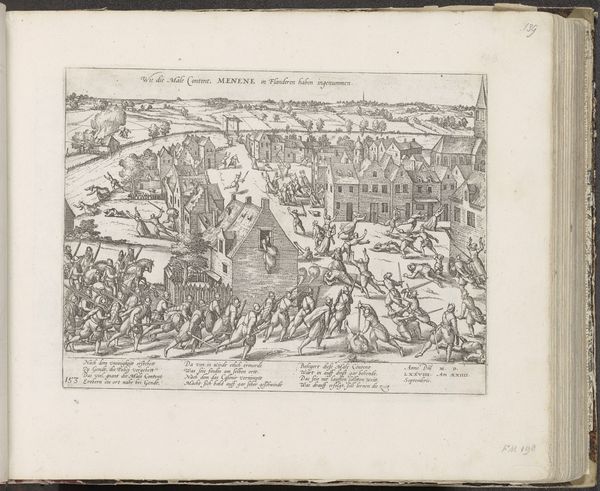
print, engraving
# print
#
landscape
#
mannerism
#
history-painting
#
engraving
Dimensions: height 210 mm, width 280 mm
Copyright: Rijks Museum: Open Domain
Editor: So, this is "Slag bij Jemmingen, 1568" by Frans Hogenberg, made between 1568 and 1570. It’s an engraving, a print. I'm immediately struck by how it depicts a bird's-eye view of this chaotic battle. It looks incredibly detailed, almost like a map. What catches your eye in this work? Curator: What I see is the commodification of conflict through the printmaking process. Consider the material—engraving. Its reproducible nature makes this battle, a specific historical event, available for mass consumption. It transforms the event into a product, a spectacle for the public, raising questions about the intent behind its creation and dissemination. Editor: That's an interesting perspective. I hadn't thought about the "product" aspect. Were these prints widely circulated? Curator: Exactly. Think about the labor involved – the engraver meticulously carving the image, the printers producing copies. This wasn’t a unique artwork intended for a wealthy patron. The purpose of these images are clear; to shape the political narrative through a relatively accessible medium for those with some literacy and wealth. To what extent are the events depicted influenced or skewed in favor of the intended market? Editor: So, you're saying the material itself, the engraving, is key to understanding the print's social role? Curator: Precisely. It wasn’t simply about commemorating a battle; it was about shaping public opinion through mass-produced imagery. Even the aesthetic style —mannerism —contributes. Editor: I never thought about the relationship between the *means* of production and the *meaning* of the artwork this way. That the engraving method, something so practical, influences its message. Curator: These prints offer more than a record; they present a constructed reality, mediated by the material and the social conditions of their creation and reception. It encourages us to consider historical events from multiple perspectives rather than viewing art as simple historical depictions.
Comments
No comments
Be the first to comment and join the conversation on the ultimate creative platform.
